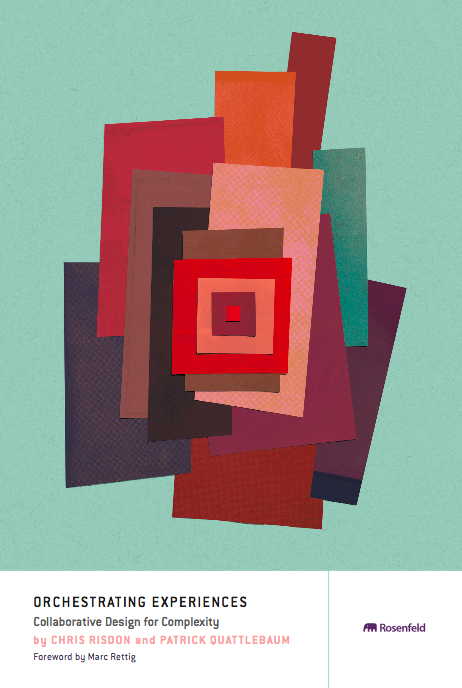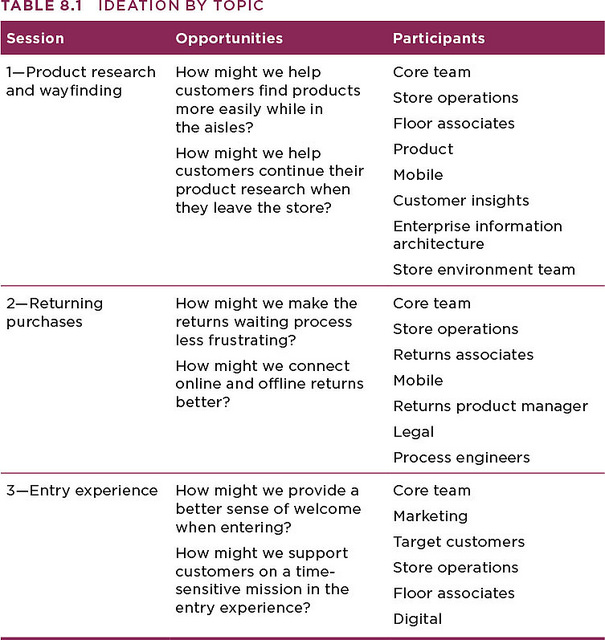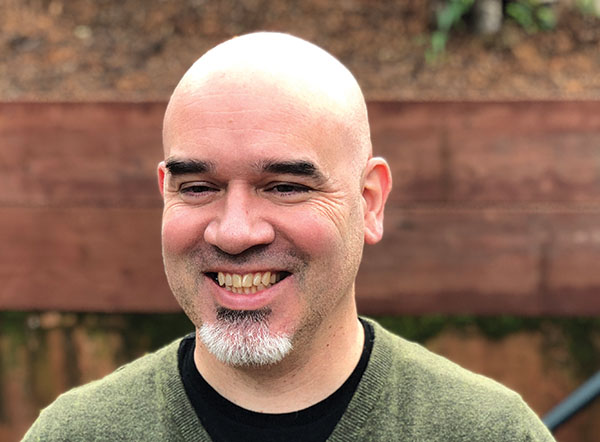
This excerpt is from Orchestrating Experiences: Collaborative Design for Complexity (by Chris Risdon and Patrick Quattlebaum). It is being shared with permission from Rosenfeld Media.
With your opportunities informed and framed as questions, you can now unleash your colleagues to address them with confidence. But how do you come up with promising ideas? And how do you wade through all those ideas to land upon viable solutions?
First, you must embrace the fact that people across your organization not only have a stake in future solutions, but they have ideas, too. Your colleagues have important viewpoints and knowledge, pre-existing solutions already in roadmaps, and the very human need to contribute to defining the future (not simply executing someone else’s vision). Therefore, you need to build on the collaborative atmosphere that has been established while engaging others to generate and explore new ideas.
Generating ideas with many people of different skills, knowledge, and experience is critical at this stage, but it does come with some challenges. Many of your colleagues likely have lived through poorly facilitated brainstorming sessions that resulted in groupthink or dominant voices shouting out other perspectives. New collaborators may challenge prior research and the opportunities you have identified because they did not have a direct hand in it. And that’s if you can get everyone to free up the time to participate. Your job, therefore, is to design working sessions and other activities that mitigate these challenges and produce quality ideas to further evaluate and choose. This chapter will equip you to do just that.
Leading the Hunt for Ideas
A plethora of books and resources exist on the topic of generating ideas. Advocates and detractors argue over the efficacy of brainstorming alone or in groups. Hundreds of proprietary approaches tout their methods as the most predictable ways to achieve innovative results. And then there’s the old truism: “I get my best ideas in the shower.”
Let’s face it—ideas are mysterious. They can come at any moment during any phase of your initiative, project, or sprint. And most of these ideas—despite the refrain “there are no bad ideas”—end up being off topic, unviable, or simply never acted upon.
That said, you can successfully engage others in generating ideas and working toward agreed-upon solutions based on your identified opportunities. This process won’t happen in a single workshop.
It requires careful planning, a variety of inputs and methods, and strong facilitation. It also takes a little creativity and a lot of flexibility. Let’s look at four aspects of designing and managing collaborative sessions:
- Structure and focus
- Expression and form
- Inputs and constraints
- Evaluation and prioritization
Structure and Focus
As with any orchestration endeavor, structure and focus in your ideation activities are critical for a positive outcome. How you plan to engage your colleagues (and customers) depends in part on your context. If you have stakeholders across a broad geography, you may want to hold workshops in multiple locations or mix in remote sessions or individual ideation. A hierarchical culture may require you to increase the size of your sessions to include multiple layers of decision makers and influencers. A tight schedule could force you to hold open sessions based on availability instead of having ideal groups for specific sessions.
Regardless of your context, you should consider the following guidelines to set yourself up for success:
- Communicate ahead. As you engage a cross-functional team in discovery and research activities, you should communicate early and often how new ideas and solutions will be addressed later in the process. People are natural problem solvers, so this will help manage their expectations while nudging them not to jump to solutions too quickly.
- Put emerging ideas in a parking lot. When ideas inevitably bubble up, don’t lose them! Gather emerging ideas in one place and save them until you are ready to move from sensemaking to solution definition. You can bring these into your workshops to be revisited, built upon, and evaluated along with new ideas that your sessions generate.
- Hold multiple sessions. End-to-end experiences have many moving parts and even more stakeholders. For both practical and quality reasons, don’t attempt to tackle all your idea generation in one large (and very long) workshop. Instead, hold several sessions to explore different opportunities, engage specific stakeholders (who may be in different geographic locations), try different methods, or to simply marinate on the outputs of previous sessions as fodder for more ideation.
- Don’t “blue sky” brainstorm—focus! Collaborative ideation works far better with a clear focus, not through free-for-all spitballing. Leverage your opportunities to provide this focus. You might consider organizing sessions around special opportunities by theme—such as by customer type, opportunity area, or journey stage—inviting participants with the most stake or subject-matter expertise (see Table 8.1).

- Strategically engage your stakeholders. Participants for each ideation workshop should be carefully selected to ensure that the proper functions are represented. People’s time is valuable, and sessions need to be relevant to their responsibilities, expertise, or role. Make sure that no one leaves a session questioning whether to accept a future invitation.
- Stay organized and keep everything. Your sessions will generate hundreds of ideas. While most will end up on the scrap heap, don’t abandon ideas that don’t oat to the top. Take pictures or scan all your outputs and keep them organized and accessible.
- Have clear evaluation criteria. Begin with the end in mind. Define how you will evaluate and prioritize at the beginning of your hunt for ideas. You should communicate this at any sessions as part of general context setting.
Inputs and Constraints
Opportunities give a specific focus for ideation in and across sessions, but they aren’t your only inputs. The many insights and frameworks that emerged during sensemaking now become tools to help your colleagues explore solutions creatively. Touchpoint inventories, experience maps, and ecosystem maps provide proper context to optimize or reimagine the end-to-end experience. Personas and other models ensure that the needs of people remain top of mind and inspire better ways to serve various stakeholders.
Most critically, experience principles should be used throughout the ideation process. They can be combined with other inputs—opportunities, journey stages, unmet needs, channels, or technologies—to prompt a range of creative solutions. Throughout this chapter, several examples of using principles to generate and evaluate ideas are provided.
In addition to sparking new ideas, these inputs serve as important constraints to keep ideation focused and productive. This is a delicate balance. Well-framed opportunities—“How might we . . . ”—provide a springboard to go beyond overly constrained problem statements, and human-centered frameworks encourage you and your colleagues to set aside personal viewpoints and biases. However, all these inputs and variables can be overwhelming. Table 8.2 shows examples of combining different inputs to constrain and focus idea generation. For any opportunity, however, you should mix your inputs in different ways to see what leads to the best results.

One question that always comes up that you’ll want to plan for: “What about feasibility?” Your objective at this stage is to produce a large quantity of possible new solutions, so you should not constrain yourself to what your organization can or probably does now. However, you do want to stay within some boundaries, if only to honor the laws of physics or the natural abilities of people! Here are some tips on managing the question of feasibility:
- Be clear on your timeline and intent. Are you looking to optimize a set of touchpoints in the next three months or instead look years into the future to reimagine the end-to-end experience? This context will help people feel out their boundaries, but encourage them not to let perceived feasibility overly constrain their ideas.
- Focus on experience. Prompt colleagues to come up with ideas for the best possible experience, not the most likely experience (given how they interpret feasibility).
- Work backward from ideal. Once you have ideas to work with, you can begin to evaluate them iteratively against feasibility (and other criteria). Your eventual solutions may not be the ideal represented in the original ideas, but they can retain the original kernel that addressed the opportunity. Your solution may also have its own evolution plan to become closer to the ideal over time (see Chapter 9, “Crafting a Tangible Vision”).
- Build new prompts. Ideas that push beyond perceived feasibility boundaries can be turned into new prompts or challenges. For example, an idea to provide product research recommendations using a mobile app could be explored using the prompt: “How might we provide personal product recommendations without the use of new technology?”
Events, Resources, + More
The Ultimate Guide to End-to-End Content
Discover why + how an end-to-end approach is critical in the age of AI with this comprehensive white paper.
The Content Advantage Book
The much-anticipated third edition of the highly rated book by Colleen Jones is available at book retailers worldwide. Learn more!
20 Signs of a Content Problem in a High-Stakes Initiative
Use this white paper to diagnose the problem so you can achieve the right solution faster.
Upskill with Content Science Academy
Training for modern content roles through on-demand certifications + courses or live workshops.







Comments
We invite you to share your perspective in a constructive way. To comment, please sign in or register. Our moderating team will review all comments and may edit them for clarity. Our team also may delete comments that are off-topic or disrespectful. All postings become the property of
Content Science Review.